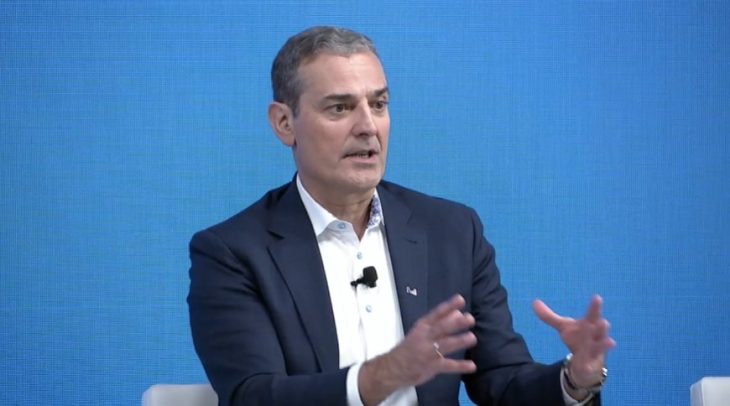
Telco focusing on content and mobility bundle
By Ahmad Hathout
Bell said Tuesday it will use the CRTC’s wholesale internet framework to launch fibre-based internet services in British Columbia and Alberta, reciprocating what its telco rival Telus is doing in eastern Canada.
The telco confirmed to Cartt that the launch of the services in western Canada “is a result of the CRTC’s recent decision,” which it does not agree with because of what it says is the policy’s negative impact on network investment. The regulator mandates that competitors have access to the bundled fibre infrastructure of Bell and Telus nationwide.
“Our position on the policy was quite clear and remains quite clear, but the decision’s been made,” Bell President and CEO Mirko Bibic said at the telco’s Investor Day conference on Tuesday. “So the job of this team here is to execute against that background … so, on that front, we are going to execute, given the environment, as we always do.”
Earlier in the day, Bell said in a press release that the internet services would launch in the “coming weeks,” but Blaik Kirby, the company’s group president of consumer and small business, later specified that they expect them to be offered starting next month.
The focus for Bell now, however, is to bundle content with its mobile wireless plans in Telus’s home court to lay the groundwork for the possible triple play.
“Our focus in the west will be to protect our mobility base by offering more services in a disciplined way,” Kirby said. “We will offer these wireless customers no set-top box Fibe TV and/or streaming content bundles to grow wireless sales and lower churn. And where necessary for the highest value customers, we will resell fiber internet.”
Kirby noted that customers out west will start seeing content bundles offered with mobility starting this week. “We think we can break the content/internet bundle that is in that market,” he said. “So our strategy is two-fold: it’s really using our owner economics on content, bundling it with mobility base in a disciplined way. And if required, we will resell fiber internet to drive that bundle.”
Bell pre-empted that prospect this summer by launching a streaming bundle with Crave, Netflix, and Disney+, which has become a trend in the industry.
“Being more competitive in the west will significantly improve customer consideration of Bell, particularly for wireless,” Kirby added. “With a strong focus on cross-sell and mobility and internet content bundling nationally, we expect this to translate to continued strong retail market share and overall better network penetration in the east and gains in wireless performance in the west.”
Last month, Curtis Millen, the telco’s chief financial officer, hinted at the possibility that Bell could use Telus’s fibre to make a compelling offer to its rival’s customers – that is, the triple play of mobility, internet and content – but said ownership of the internet infrastructure is preferred.
Telus, the only one of the three largest internet companies to favour the CRTC’s wholesale internet policy, has been using Bell’s fibre to deliver gigabit internet speeds to customers in Ontario and Quebec. To be consistent in its position, the Vancouver-based telco has said publicly that it invites competitors to use its networks.
SaskTel, which is required to make available its fibre network to competitors as part of the wholesale decision, has an outstanding leave to appeal application before the Federal Court of Appeal related to how the CRTC came to that determination. Telus and TekSavvy, with backing from Quebecor, are asking the court to reject the application.
Screenshot of Bell President and CEO Mirko Bibic at the Investor Day conference on Tuesday



